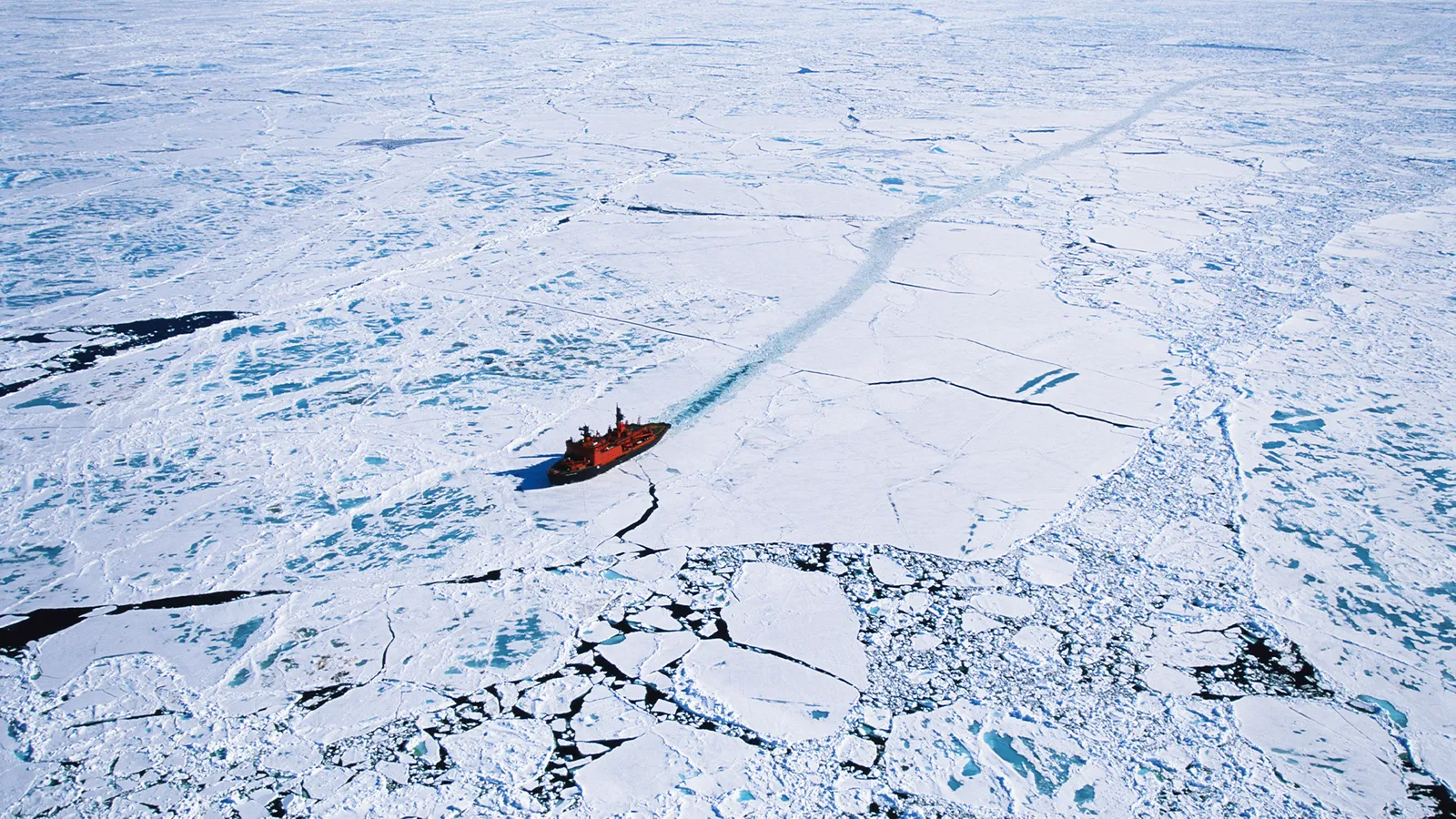The North Pole: One of Earth's last 'un-owned' lands
The journey to reach this elusive destination helps travellers grasp the power and fragility of our changing planet.

The world is filled with wondrous places, but there are still many far-flung corners of the globe that few people ever get to see. In their forthoming book, Remote Experiences: Extraordinary Travels from North to South, photographer David De Vleeschauwer and travel journalist Debbie Pappyn journeyed to 12 of the world's most hidden, uncharted and remote territories relatively untouched by tourism. By going where the crowds don't, the duo is hoping to encourage others to travel slower and more purposefully, and to take better care of the planet we all share.
Owned by no-one, claimed by many, the enigmatic North Pole is a constantly shifting sheet of ice in the middle of the Arctic Ocean. The world's largest and strongest nuclear-powered icebreaker, 50 Let Pobedy, sails every summer to 90° north with 100 passengers aboard, all eager to set foot on the geographical top of the globe. For most of them, this moment is much more than ticking off a list. It is all about the voyage.
When the ship cracks an ice sheet 3m thick on its way there, it sounds raw and without reservation. The name of the ship means "50 Years of Victory" in Russian, and refers to the 50th anniversary of the Soviet Union's triumph in World War Two. To commemorate its launch, the ship carried the Olympic flame to the North Pole in 2013 during the run-up to the Sochi Winter Olympics. Powered by a pair of 171-megawatt nuclear reactors and two 27.6-megawatt steam turbo-generators, the almost 160m-long icebreaker can reach 21.4 knots – almost 40km per hour – and sail nonstop for almost six years without returning to land for refuelling. With nuclear reactors on board, fuel stops become almost a thing of the past.
The behemoth's primary mission is to carry super-sized cargo ships through the frozen Northeast Passage in winter. During summer, the icebreaker transforms into an expedition ship for exploration and adventure, departing from its home port of Murmansk. From here the ship sails in the direction of the mythical Franz Josef Land, where only Russian ships are allowed to drop anchor.
There is a throwback quality to those who travel this far north, an eccentricity reminiscent of early explorers who were not deterred by extremes or afraid of challenging situations. After leaving Murmansk, it takes two days to reach the pack ice. This is the realm of the polar bear, where human visitors face a new set of rules. From here onwards, the frozen silence, the supernaturally white panoramas, and the murky gloom of the frigid ocean below seem endless. As 50 Years of Victory slices through the blank landscape, the thunderous groan of the ship's steady progress reverberates through its red-painted, reinforced hull. Passengers wrapped in thick layers of warm clothes stand on the bow, watching the ice split, snap and crack, followed by the blue of the Arctic Ocean surging through, as if gasping for breath.
This is not an ordinary sea voyage aboard a fancy cruise ship. The route to the northernmost point on the planet, where the Earth's axis of rotation meets its surface, takes 11 laborious days, moving not much faster than 20km per hour when cracking through the ice. The presence of polar bears gives this voyage an extra dimension: in this frozen world, man is not king. Travellers take this trip not only to set foot atop the world but to be immersed in the raw beauty of the high Arctic.
Gazing at vast expanses of sea ice is addictive and even soothing. The sun never sets in the Arctic summer and yet the light transforms constantly, reflecting off the pale-white ice sheet. Sometimes the weather is cold, moody and dull, with a thick fog. Other days there is a velvety sheen to the light, flushed with pink or lavender tones. The frozen ocean is often delicately shrouded in a flowing palette of shades of white. It doesn't matter whether you are out on deck or gazing through a porthole in the warm belly of the ship to this ever-changing panorama. After a couple of days sailing, when the North Pole is finally reached, excitement ripples through the ship. Some passengers describe it as a feeling of recalibration, a new beginning.
On top of the world, it is time for a toast with ice-cold vodka. All passengers gather in a circle around the geographic North Pole and raise their glasses in cheer. The moment is almost triumphal. And then there is the infamous Polar Plunge, perhaps the most iconic swim anywhere in the world. This plunge, which is nothing more than a dip in the Arctic Ocean, is a once-in-a-lifetime thrill. Daredevils warm up with mulled wine and more vodka, while the ship's crew sets up a barbecued lunch on the ice. In the few hours spent at the Pole, the sun is out, the wind picks up, the clouds arrive and it snows. There are four seasons in one hour on top of the world.
The North Pole is elusive; this place does not want to be caught. This is a very brief anchorage; remaining at the exact latitude 90° north lasts a minute or so. By the time the ship leaves, it has already drifted two nautical miles, almost 4km. The frozen ocean is in constant motion. On its way back south, the ship tries to retrace its tracks in the thick ice sheet.
-bbc







